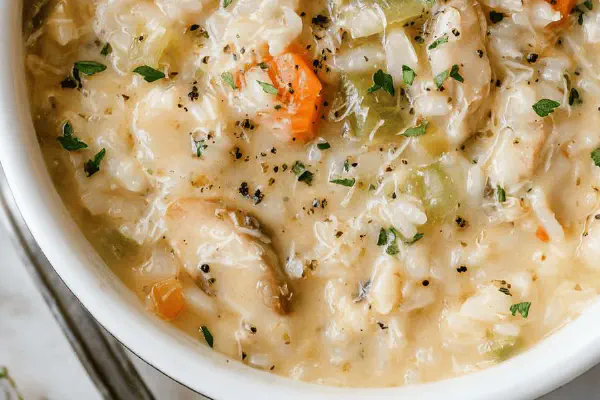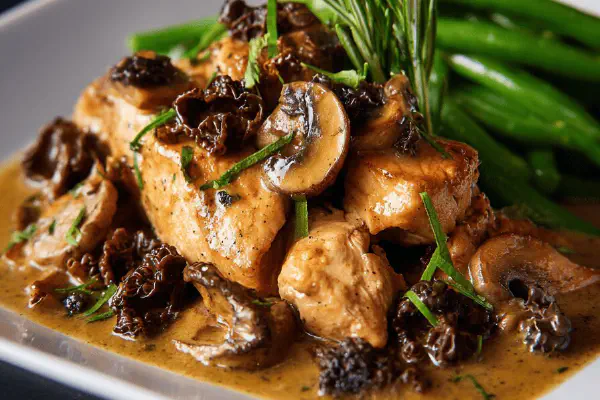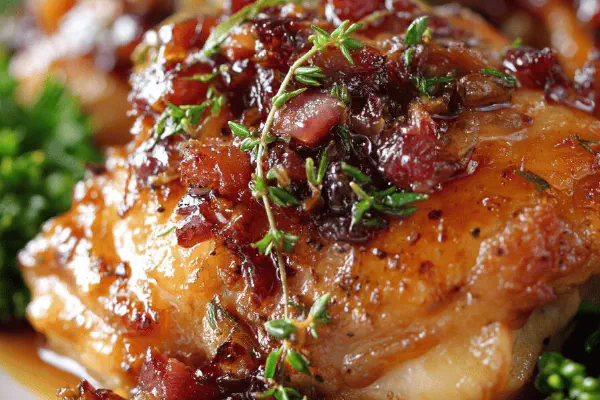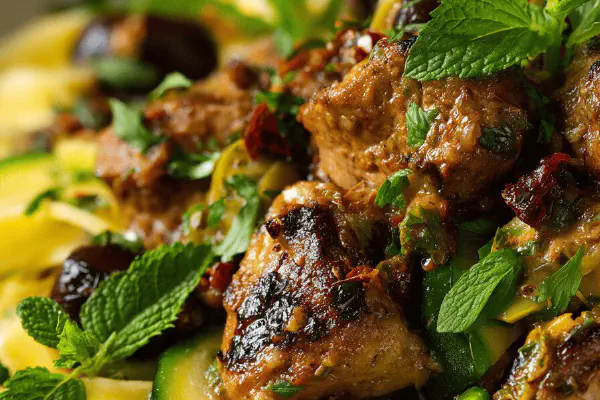Lemon Onion Chicken Twist
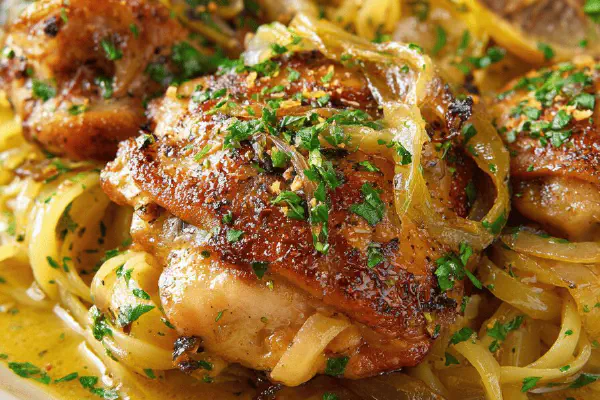
By Emma
Certified Culinary Professional
Ingredients
- 500 g boneless skinless chicken thighs
- 25 ml olive oil
- 1 large onion, thinly sliced
- 1 shallot, minced
- 4 thin lemon zest slices (2 mm thick)
- 125 ml dry vermouth
- 15 ml chopped fresh parsley
- 15 ml chopped fresh chives
- Salt and black pepper to taste
About the ingredients
Method
- Heat oil in large nonstick skillet over high heat. Brown half the chicken until golden, season with salt and pepper. Remove and set aside. Repeat with remaining chicken.
- Lower heat to medium-high. Add onions and shallot to skillet. Sauté until translucent and tender, about 7 minutes. Stir in lemon zest slices.
- Return chicken to pan. Stir often, cook 3 minutes. Pour in vermouth, cover. Simmer on medium heat for 10 minutes.
- Uncover, increase heat to high. Reduce sauce by half, roughly 15 minutes, stirring occasionally to prevent burning.
- Check seasoning, add more salt or pepper if needed. Sprinkle parsley and chives over dish before serving.
- Serve alongside roasted root veggies or rice noodles for a hearty meal.
Cooking tips
Chef's notes
- 💡 Brown chicken in batches; avoid crowding pan or steam, color matters. Medium-high heat after browning for onions, don’t rush to soften; patience unlocks sweetness not bitterness. Use thin lemon zest slices not wedges for oils released gradually, adds subtle brightness. Stir often in simmer but don’t break chicken pieces. Using dry vermouth instead of wine gives sharper, herbaceous flavor layer; don’t skip this swap, changes whole aroma.
- 💡 Simmer covered at medium heat; retains juiciness but prevents drying tough chicken. Uncover to reduce sauce slowly, high heat preferred but stir frequently to avoid burning sticky spots. Season throughout process but final salt and pepper adjustments essential, vermouth adds slight bitterness that needs balancing. Fresh herbs like parsley and chives added last keeps their aroma bright and texture crisp, don’t cook them in or it dulls flavor.
- 💡 Olive oil chosen for sear and subtle fruitiness, avoid butter for browning; can burn easily. Shallots add sharper bite than onion alone; finely mince to distribute flavor evenly. When slicing onion thinly, uniformity helps in even cooking. Lemon zest thickness around 2 mm – too thin won’t hold shape, too thick can overpower. Use nonstick pan for easier stirring and quicker cleanup, but watch heat carefully to prevent oil smoking.
- 💡 Serve with roasted root vegetables to keep earthiness strong or light rice noodles for contrast. Adjust cooking times slightly if chicken pieces vary in size - thicker thighs need more simmering, thinner less. Salt works to draw out sweetness from onions, taste repeatedly while cooking, seasoning is a balancing act here. Reduce sauce to clinginess not dryness; sauce should coat chicken but pool slightly for spooning.
- 💡 Avoid overcrowding skillet during browning to get even caramelization, golden edges create flavor base. Add lemon zest early during onion softening to allow oils to mingle without burning. Stir chicken gently after return to pan; breaking bites loses texture, keep pieces intact. Chives add mild onion hint stronger than parsley but less raw bite, combined they add complexity. Adjust heat carefully; too high reduces sauce too fast, too low toughens chicken.
Common questions
Can I use chicken breast instead?
Breast cooks faster, needs less simmer time. Watch don’t dry it out. Browning still works but cook gently later. Texture changes, less fat than thighs. Adjust heat.
What if no dry vermouth?
Use dry white wine or chicken broth as alternate, missing some bitterness and aroma. Vermouth sharp, herbal note harder to mimic. Could add splash lemon juice extra brightness if using broth.
How to store leftovers?
Cool quickly, store air-tight container fridge up to 3 days. Sauce thickens in fridge; reheat gently adding splash water or broth. Freeze possible but texture shifts slightly in thawing. Best eaten fresh though.
Overcooked chicken, fix?
Moisture gone, slice thin, serve in sauce to mask dryness. Adding extra fresh herbs and lemon zest before serving helps fake freshness. Could shred chicken into noodles or rice for texture.
